Nayaka event 2019 epilogue!
The Nakaya Pen Event was an absolute success! Close to 100 fountain pen aficionados visited the Sakura Fountain Pen Gallery to see Nakaya’s lead designer and nib meister Yoshida-San at work. The online pen community from the BeNeLux and far beyond was well-represented, and our store quickly turned into a cozy and fun meeting of like-minded souls that all speak the same language: nibs, nib-meistering, urushi, inkflow, lettering, Tomoe River, … Full of wonder and respectfully, we gazed at Yoshida-San swift and accurately tuning a nib or creating a crisp stub with extra ink flow.
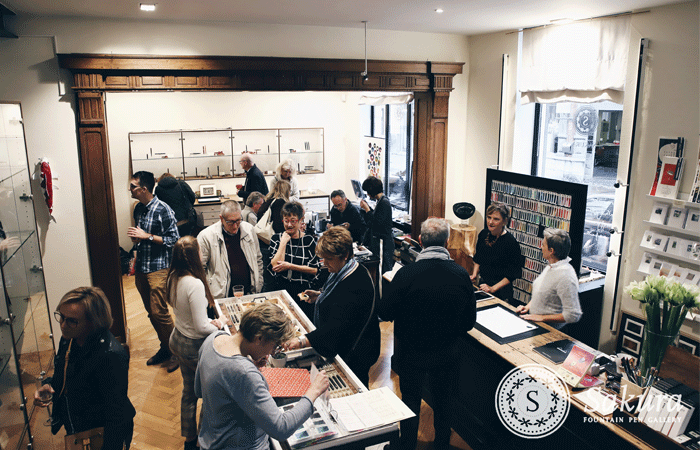
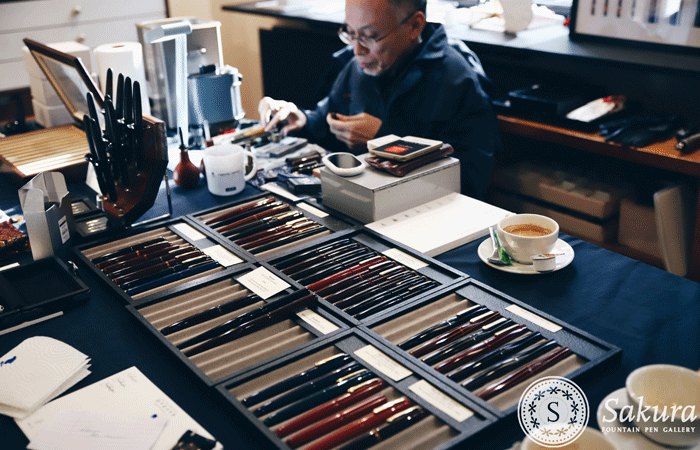
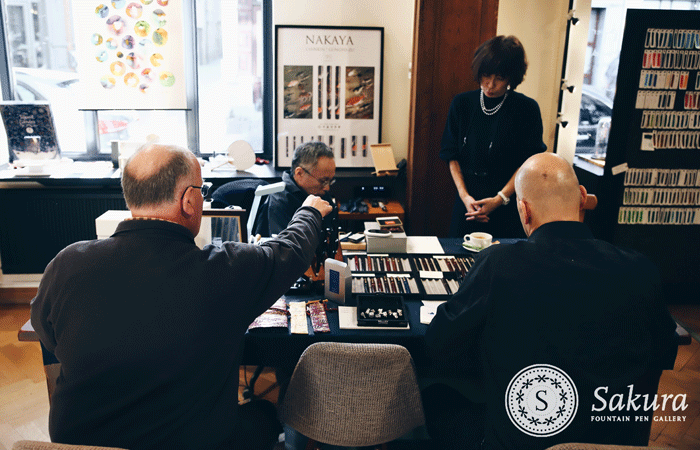
Shinichi Yoshida was born in 1964 in the city of Hiroshima, and worked for Platinum Co. from 1991 until 1998. On request from Mr. Nakata, he joined the Nakaya company shortly after. He is one of the most important employees within the company, designing the pens and coming up with new artwork designs for Wajima craftsmen to create. On top of that, Yoshida-San ensures that every Nakaya nib leaves the factory in absolute perfect writing condition.
Yoshida-San is a praised nib meister, a profession that leaves many fountain pen enthusiasts in awe. With incredible sleight of hand and certainty (mastered through decades of experience), he makes each nib dance across his small grinding stones: left, right, up, down, and figures of eight. The final result is meticulously checked with his loupe and adjusted where needed. The benefit of the Nakaya Event is that each customer (and even long-time Nakaya owners) can have their pen’s nib changed in real-time. Yoshida-san carefully observes the writing style of the owner and the performance of the nib. Only when the nib meister is happy, the new pen can join its owner on its adventure!
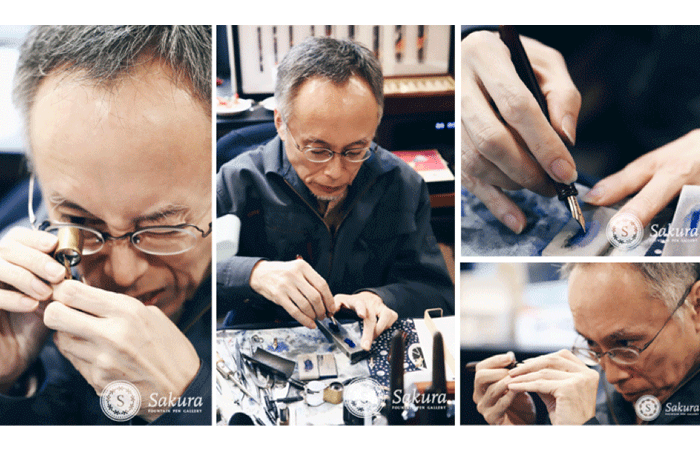
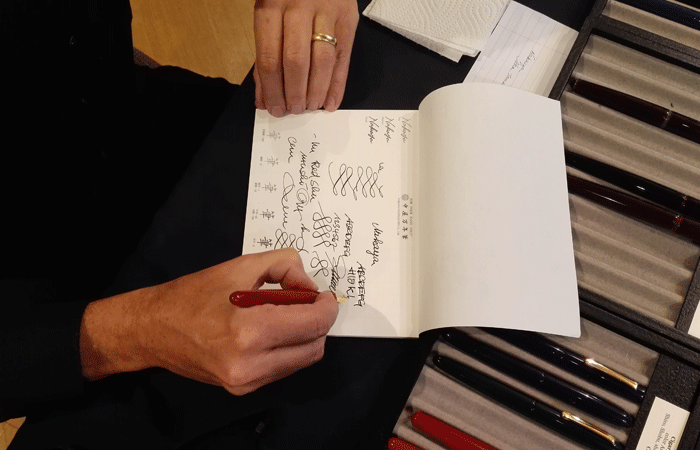
Mrs. Yoshiko Kato, kind as ever, translates where necessary and keeps a close eye on the paperwork. Kato-san handled all nib or pen requests calm and diligently, and helped with translating these questions between the customers and Yoshida-san.
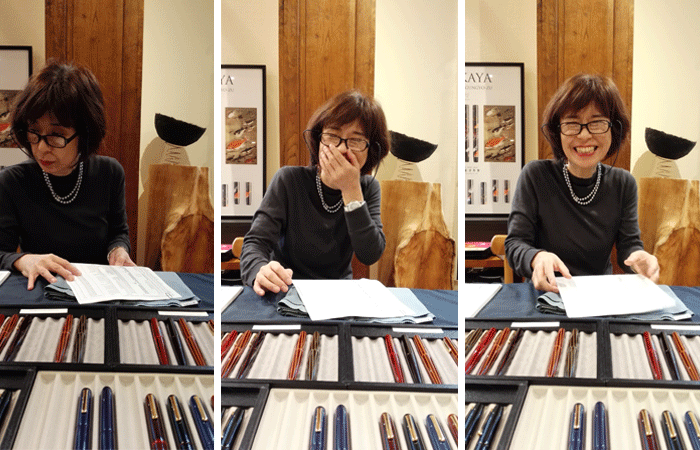
Of course, Mrs. Kato and Mr. Yoshida didn’t travel alone. They brought a large selection of Nakaya fountain pens along for the customers to gaze at, try, and purchase. The ‘standard’ line of Tamenuri and Roiro urushi lacquer pens was well-represented, and they even brought a unique, show-exclusive product: the Ryogiri. The body of the Ryogiri is the base model of the widely popular Dorsal Fin but does not have the distinct fin-shaped structure made from many layers of urushi lacquer. It is a beautiful pen, and something well-worth traveling to a nearby Nakaya event – because this pen can not be ordered!
Ryogiri Kuro-tamenuri
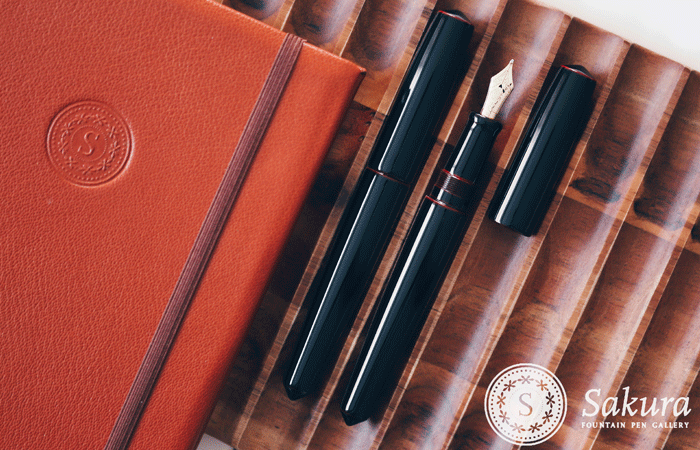
Among the decorated Maki-E and Raden fountain pens, you could find a couple of highly exclusive gems, such as the Gunyu-Zu, in a remarkably elaborate Chinkin finish. The imagery is based on two paintings by Jakuchu Ito, a renowned artist from the early 18th century. A giant octopus dominates the scene in the middle of the pen. Many colorful sea creatures surround it. The Chinkin technique is elevated to a new level by the independent artist that created this pen. It’s refined and delicate and shows incredible amounts of texture on a closer look. Gold and silver dust are combined with colorful lacquers to create an intricate interplay not often seen in Chinkin techniques. This pen is an absolute work of art. Only one piece currently exists, but it can be ordered on special demand.
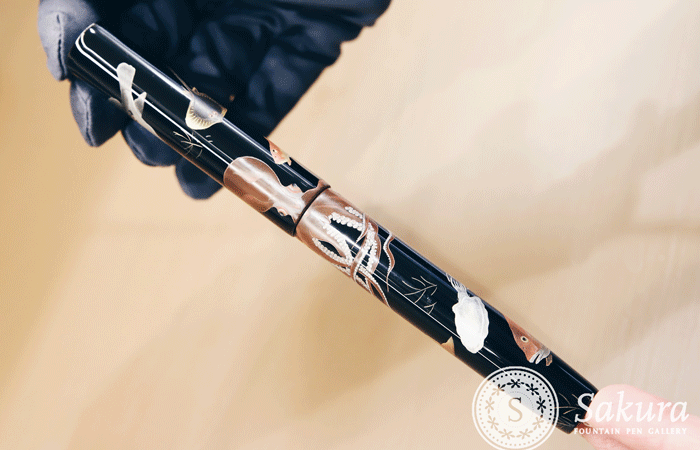
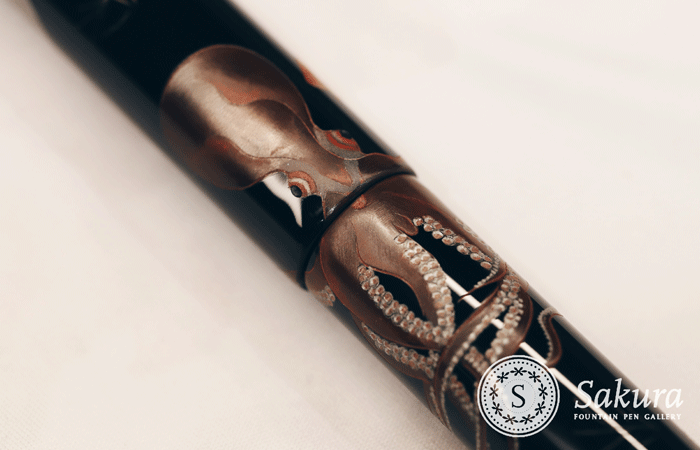
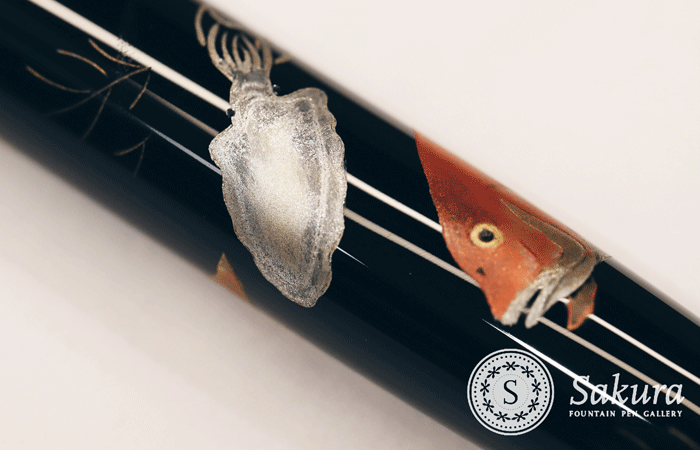
The Kawasemi (Kingfisher) Maki-e is depicted in M-A-R-V-E-L-L-O-U-S colors under an arch of Momiji autumn leaves. A small fish swims across the grip section of the pen, staying out of sight from the all-seeing eye of the Kingfisher bird. A quirky and fun detail that brings extra value to the spectacular.
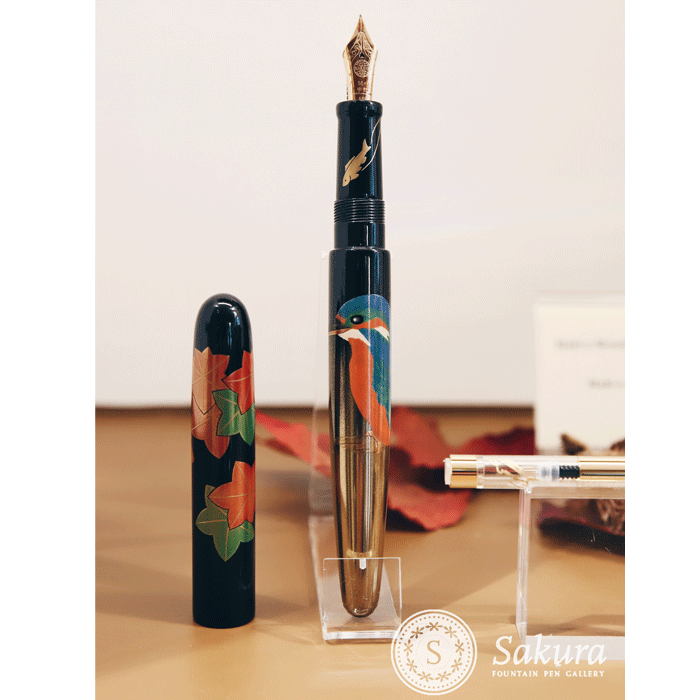
Other pens that impressed:
The Moon
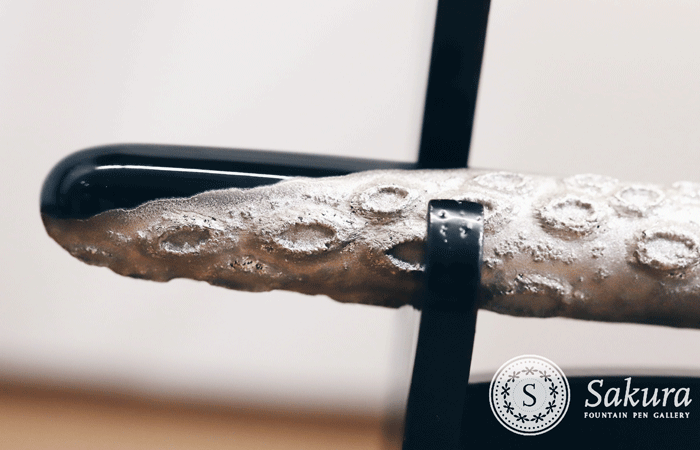
String-rolled Itomaki
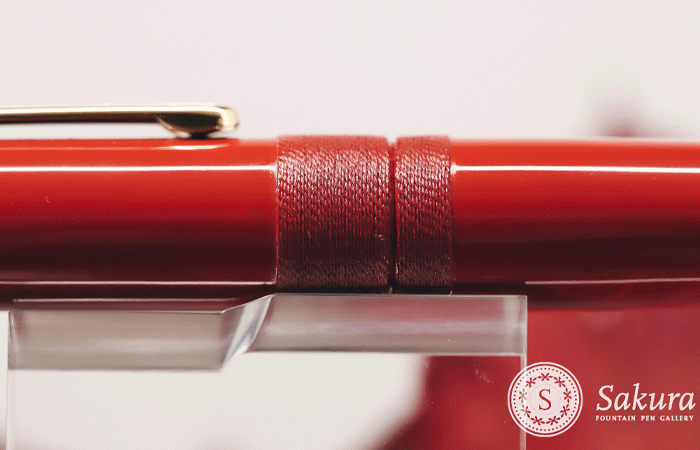
Maki-e Kaguya-hime
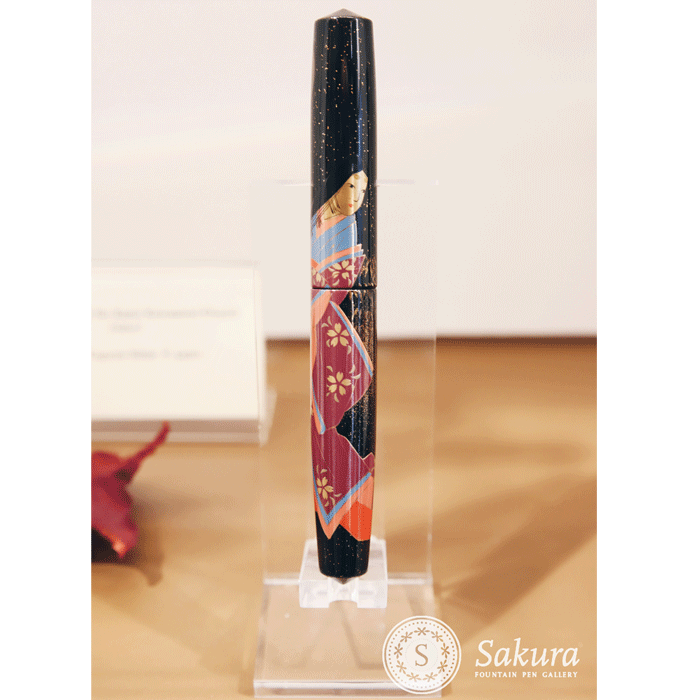
Raden
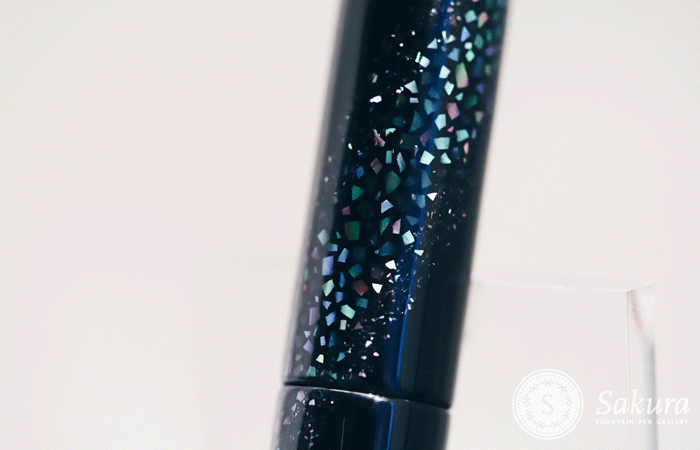
‘Scary Eye’ and ‘White Rose’
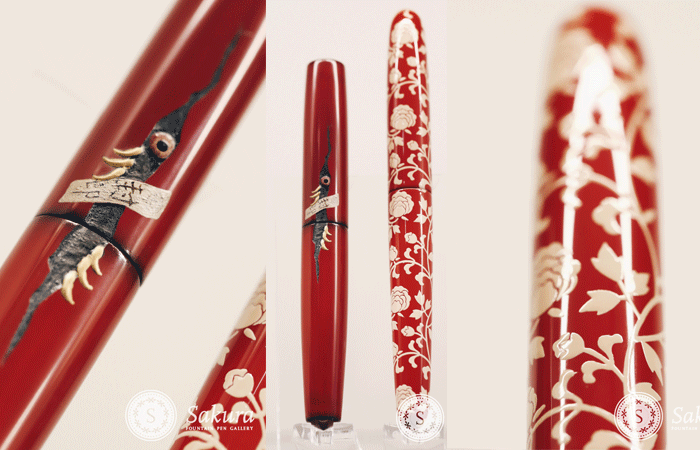
Shu Nurippanashi exists of a black (Kuro) urushi base layer, on which only two top layers of red (Shu) coatings are painted. The black base color is slightly visible. It creates a finish that resembles Negoro-Nuri lacquerware. The Shu top coat is not polished (Nurippanashi) to give a subtle satin finish. It’s feasible that with heavy use, the red topcoat will wear slightly, revealing some parts of the black base creating a genuine ‘Wabi-Sabi’ product, unique to the user. Negoro Nuri is a lacquer technique from the 14th century, and artifacts made from this technique are highly coveted amongst collectors.
Bamboo by silver powder
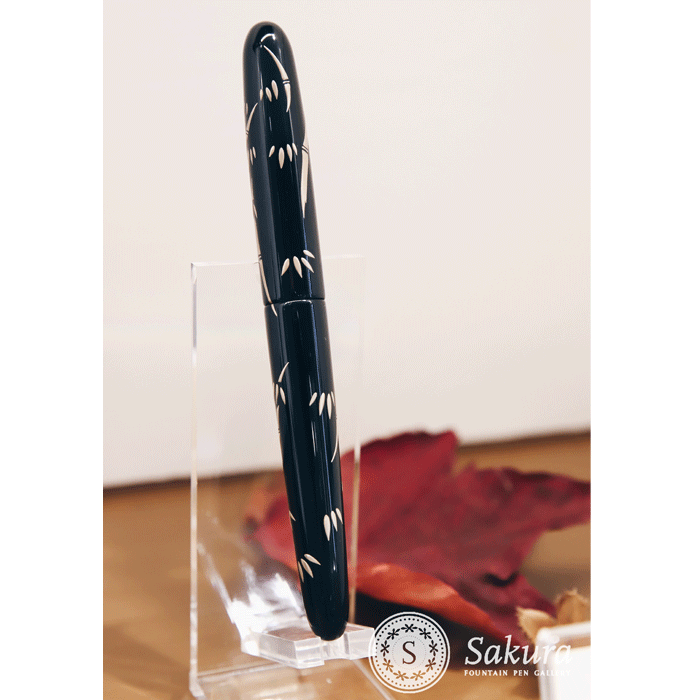
My Dream Team, Marleen, Anny, Silke, and Jitse made sure that all customers were treated with delicious soup, appetizers, sparkling wine, homemade lemonade, coffee, tea, and of course, biscuits and chocolates from the best Pattisier in Diest! Dries from The Pencilcase Blog (www.pencilcaseblog.com) and Kathy kept the event going smoothly with their expert advice and helping hand to aid customers in finding their beautiful, next pen!
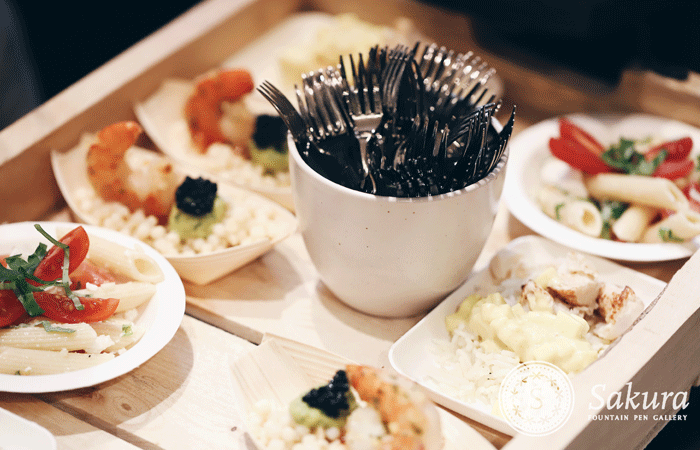
After the event, Yoshida-san helped in drawing a lucky winner of the beautiful Ladon pen case. This black wooden collector’s case with leather-covered lid went home with A. Ludicello from Tongerlo! Congratulations!
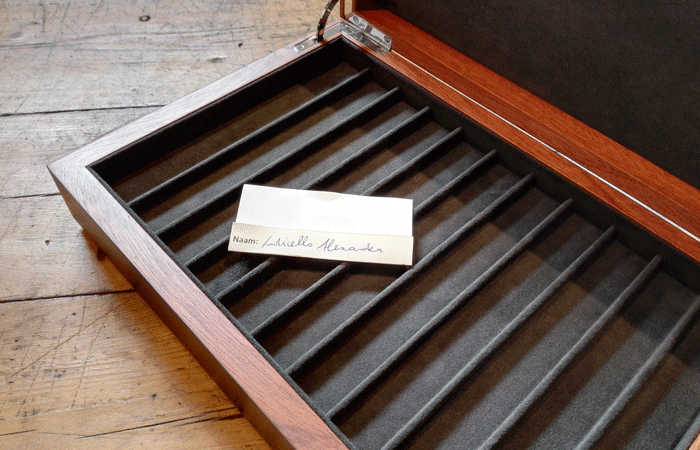
My sincere thank you goes out to Nakaya, Mr. Yoshida, Mrs. Kato, all customers who visited, the Dream Team of SFPG helpers, and all other supporters! No event would be possible without all these people. THANK YOU, Catherine
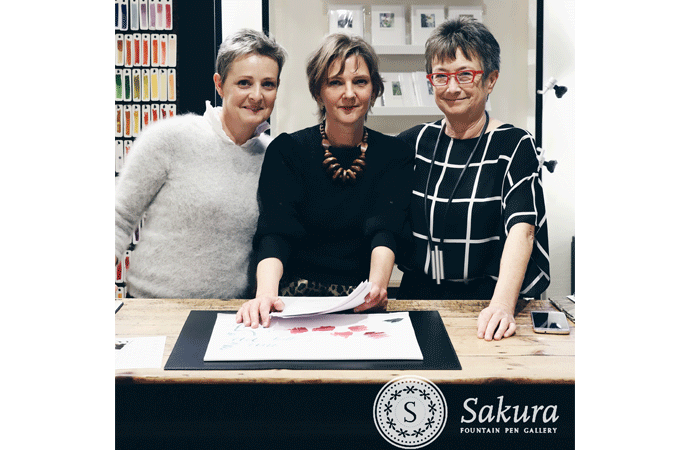
Kathy, Catherine, Marleen






